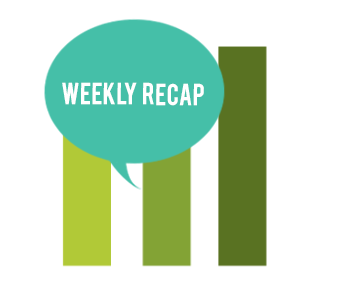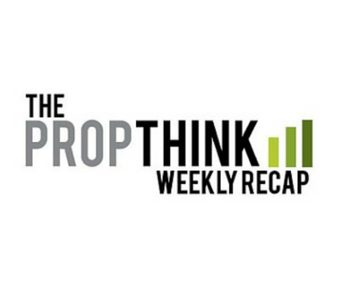We’re in the throes of yet another sharp “V-bottom” for the S&P 500 (SPX), a rapid drop followed by a rip-your-face off rally – the 10th occurrence in the last two years. The bounce after last week’s weakness coincides perfectly with the “Santa Rally” that traders and investors have been patiently waiting/watching for. What’s that? Historically, the last ten trading sessions of the year are up 76% of the time, according to data from JPMorgan tracing back almost 90 years, with an average return over that period of 1.27%, vs. 0.29% for all ten-day periods in the dataset.

It looks like we’re headed for new highs.
The FDA approved AbbVie’s (ABBV) hepatitis C regimen, Viekira Pak, for chronic genotype 1 (GT1) infection on Friday. The greater readthrough, however, is the drug regimen’s pricetag and potential impact on Gilead Sciences (GILD) and its paradigm-shifting HCV cures Harvoni and Sovaldi.
AbbVie priced at only a marginal discount to Gilead’s Harvoni, which comes as no surprise to Alpha Biopharma’s (and PropThink contributor) Dr. Paul Nunzio De Santis (PharmD), who nailed the pricing scenario in his deep-dive GILD report earlier this year. He’s been adamant that AbbVie would not price at a major disparity to Sovaldi/Harvoni given the potential impact on its own key franchise, Humira, and the industry’s collective ability to maintain premium drug prices. His analysis of GILD and his expectations for ABBV’s price were eerily spot on.
Ultimately, we view AbbVie’s marginal discount as a near best-case scenario for GILD.
AbbVie will sell the therapy at $83,319 for a 12-week regimen, 12% lower than Gilead’s Harvoni, which is priceed at $94,500 for the same 12-week approach. Though Viekira Pak will certainly have a place in the market, prescribers and health plans have little incentive to use the newer regimen, despite a slight discount. ABBV has no clinical advantages and a greater risk of non-compliance with a heavier pill burden than Harvoni. This means that the risk of relapse is greater, and real-world SVRs will likely be lower than that reported in trials (as much as 10%). If 10 of every 100 patients receiving Viekira Pak do not achieve SVR and revert to Harvoni, the cost benefit of the new drug regimen is immediately lost. This is a risk that payors are unlikely to take. Additionally, treatment-naïve patients and those with a low viral load will likely all be given Harvoni for 8-weeks, at $63,000, vs. Viekira at $83,309 for 12 weeks.
The marginal discount brings to a close a long-standing debate among investors: would ABBV discount it’s new product in order to take greater market share from GILD (and would it work?), or price on par and preserve its own (and pharma’s) drug pricing power? Recall that it was the high price of Gilead’s Sovaldi early in 2014 that prompted a sector-wide, 2-month sell-off. We’ve come a long way since, with the iShares NASDAQ Biotechnology Index Fund (IBB) up 30% from the April lows.
We’re simplifying for the sake of brevity, but we continue to believe that ABBV will take some 15% market share in HCV, providing a meaningful tailwind for the Humira-dependent company. We suspect GILD, meanwhile, is headed for $120 in the near-term, and see fair value closer to $150 as this major overhang is lifted. We continue to like the idea of selling $95-$100 Puts over the next few months in favor of $120 Calls, given Gilead’s presence as a major buyer of its own stock.
This Friday marked the close of a simple options strategy that we suggested to PropThink Premium members in late November. We outlined how selling a $2 Straddle in Oncothyreon (ONTY) might be the perfect way to play the company’s release of ONT-380 data at the San Antonio Breast Cancer Symposium last week. Although the equity component was closed flat, the straddle, sold short for $0.85, expired for a gain of about 75% this Friday.
Wondering what PropThink Premium looks like? Here’s exactly how the trade appeared to Premium members in November. We try to keeps things approachable, with a simple call to action followed by an in-depth analysis of the trade.

You can get one month for 50% off (just $49), or sign up for our annual product to get 3 months free. Check it out by clicking here.
In other news this week, investor/entrepreneur Dr. Patrick Soon-Shiong made a sizable investment in Sorrento Therapeutics (SRNE), in addition to forming a joint venture with the small company to develop immunotherapies for oncology and auto-immune diseases. Dr. Soon-Shiong is a well-known name in healthcare for his role in inventing and developing Abraxane, an albumin-bound version of paclitaxel that was sold to Celgene (CELG) in 2010 for $3 billion.
This is what makes the investment intriguing. Sorrento’s lead product candidate is Cynviloq, a nanoparticle paclitaxel currently in a head-to-head trial versus Abraxane. Sorrento bills Cynviloq as a better alternative to Abraxane (“next-generation”) given the potential for higher paclitaxel dosing and fewer safety issues. Dr. Soon-Shion’s involvement is a major vote of confidence not only in the developmental product, but in the company’s approach, seeking approval through the simpler 505b2 pathway. Read more by clicking here.
2014 is almost at an end, but there’s still a lot going on in the biotech sector before the end of the year. To name a few:
Achillion Pharmaceuticals (ACHN) has yet to announce data from an early trial of its “nuc”, ACHN-3422. This data could send the stock in either direction by $7+. In October, we explained how we’d be involved on the cheap using options. Guidance from ACHN is for data by year-end.
Conatus Pharmaceuticals (CNAT) will have biomarker data for lead drug candidate emricasan in ACLF by the end of the year. Get details in “Why Conatus Fell Out of Bed in the Second Half“, and why Conatus is so interesting in light of Intercept Pharma’s (ICPT) astronomical move early this year.
One or more of PropThink’s contributors are long CNAT, GILD, ABBV, or SRNE.



